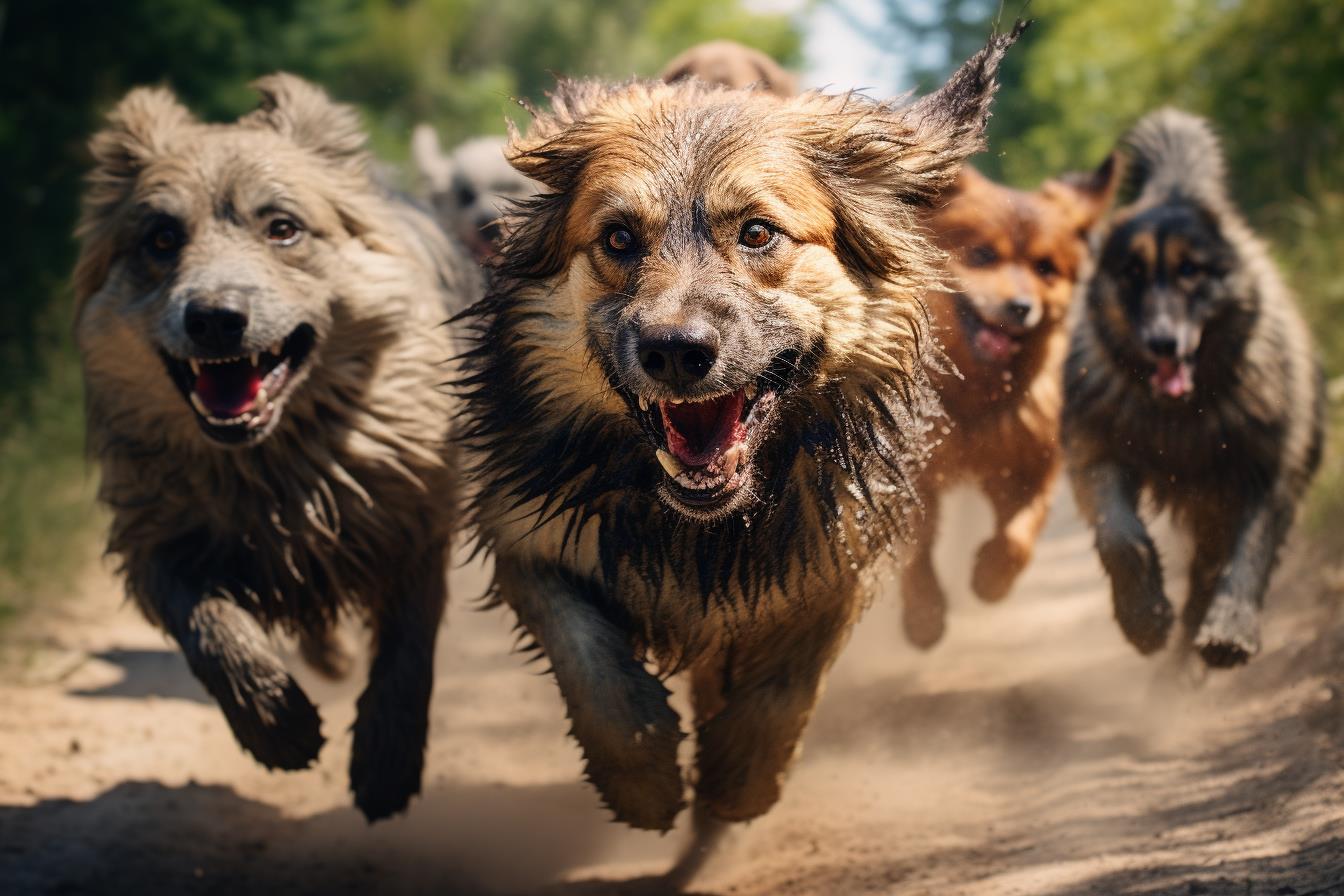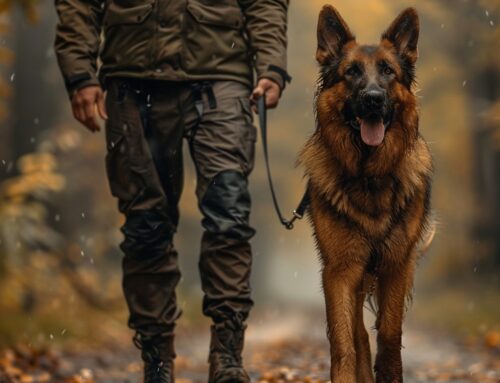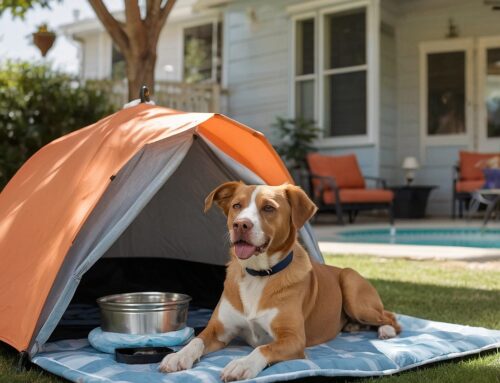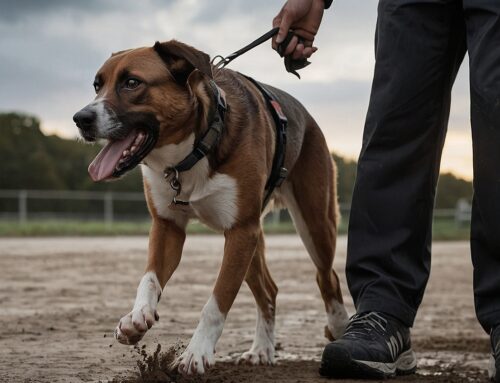So, you’ve got a new furball in the house – awesome! But, hey, sometimes our pals can throw us a curveball with some behavioral quirks. No worries, though! We’re diving into the nitty-gritty of training programs that are all about keeping the good vibes with your furry buddy when you see they may exhibit aggressive behavior. We’ll be diving into the realms of positive reinforcement techniques and intervention from a professional dog trainer that can help with a balanced method for your pup. We aim to provide insights into fostering a harmonious relationship with your esteemed canine companion as their dog owners.
Navigating the intricate landscape of aggression requires a nuanced approach, and this guide aims to be your companion in this transformative journey. And while we can’t change your dog’s personality, we’ll unravel the layers of canine behavior, offering a roadmap for addressing your dog’s aggression through positive, compassionate, and tailored training methods to help teach your dog about their behavior and how to respond to it. Whether you’re a first-time pet owner or a seasoned canine companion, join us as we explore effective strategies to foster a strong bond with your beloved four-legged family member.
1. Understanding Aggression in Dogs
Before going into training programs for aggressive dogs, it’s crucial to grasp the root causes and warning signs of aggression in dogs. Aggression can manifest due to fear, anxiety, territorial instincts, or lack of proper socialization with other dogs and people. Consulting with a veterinarian or certified dog behaviorist is the first step in identifying and addressing these underlying issues with canine aggression.
Understanding the triggers for aggression is essential. Dogs may react aggressively to unfamiliar people, other animals, or specific situations that may be threatening behavior. By pinpointing these triggers, pet owners can tailor training programs to address the specific challenges their dogs face. Additionally, considering the dog’s breed, history, and individual temperament is also helpful. Certain breeds may have predispositions to specific behaviors, and a thorough understanding allows for more targeted and effective training approaches. Exploring further into the psychological aspects of aggression can be enlightening. Many dogs may display aggressive behavior as a coping mechanism or a response to past trauma. Recognizing these nuances contributes to a more comprehensive and empathetic approach to training.
Recognizing and respecting your dog’s thresholds and limitations is essential, mirroring the way humans have their own boundaries. Refrain from exposing your dog to situations where they might feel compelled to defend themselves, possibly triggering aggressive behavior. Acknowledging and understanding these limits fosters a harmonious connection between you and your dog, ensuring a balanced and cohesive life together.
2. Positive Reinforcement: The Cornerstone of Training for Aggressive Behavior
Training programs for aggressive dogs often center around positive reinforcement. This technique involves rewarding desirable behaviors with treats, praise, or toys. By associating positive outcomes with good behavior, dogs are motivated to repeat these actions, gradually diminishing aggressive tendencies.
Positive reinforcement is not just about rewarding good behavior; it’s also about ignoring or redirecting undesirable behavior, especially for a reactive dog that may be showing those warning signs of aggressive behavior. This approach helps shift the focus from negative actions to positive alternatives and making sure your training is balanced with making sure your dog understands both the positive interaction and the basic understanding of the word ‘no’ and in turn will help in creating a more optimistic learning environment. Consistency in positive reinforcement is key. Dogs thrive on routine, and regular, timely rewards reinforce the association between behavior and reward, facilitating quicker and more lasting behavioral changes.
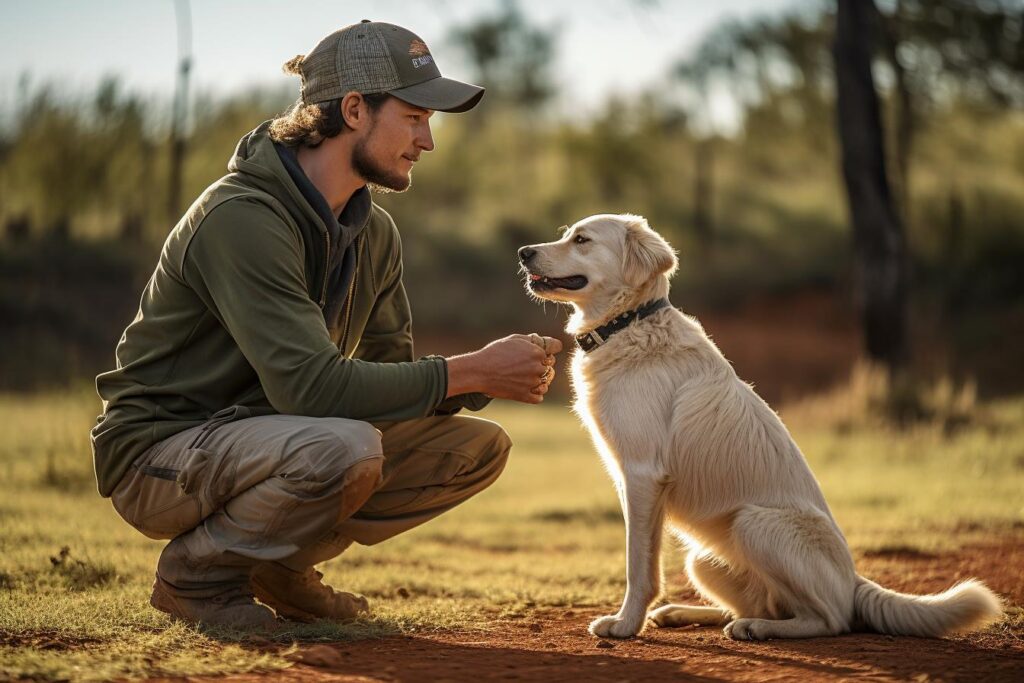
Moreover, incorporating positive reinforcement into everyday interactions strengthens the bond between the family members and the dog. Simple acts like praising calm behavior or offering a treat during routine activities contribute to a positive and reinforcing environment.
3. Desensitization and Counterconditioning Techniques
Desensitization and counterconditioning are powerful tools in modifying aggressive behavior. Desensitization involves gradual exposure to stimuli that trigger aggression, allowing the dog to adapt over time. Counterconditioning focuses on replacing the aggressive response with a positive one, creating new associations that are conducive to a calmer demeanor.
Successful desensitization requires patience and incremental progress. Gradually increasing exposure to triggers while ensuring the dog remains calm helps build confidence and resilience. Counterconditioning involves pairing the trigger with positive experiences consistently to reshape the dog’s emotional response.
Moreover, understanding the threshold at which the dog becomes aggressive is crucial in designing an effective desensitization plan. Monitoring body language and responses during exposure helps gauge the level of comfort and tailor the training accordingly. For example, if a dog regularly growls you’ll want to find what the cause may be, are they growling because of a sort of resource guarding behavior, or do they see another dog and want to start a dog fight. Make sure to take note of what your dog is doing so you can help counter conditioning and desensitize them from their triggers. And while we aren’t here to change their personality, knowing their triggers and limits will only help in effective training. You want to make sure your dog gets the appropriate training and we can teach them through obedience skills under distraction and impulse control to behave around dogs and people once you get that understanding of their thresholds.
4. Obedience Training for Aggressive Dogs
Establishing a strong foundation of obedience is essential when dealing with aggression. Teaching basic commands such as sit, stay, and recall helps reinforce the owner’s role as the leader, promoting better control and understanding between the dog and its human companions.
Obedience training extends beyond commands; it also includes leash manners and impulse control. Consistent reinforcement of these skills enhances the dog’s ability to focus and respond appropriately, even in challenging situations. Learn more about the importance of obedience training in some basic behavior modification training with Performance K9 Training! Here we want to show a balanced program that teaches both positive reinforcement, but making sure your dog understands the word ‘no’ when showing those unwanted behaviors.
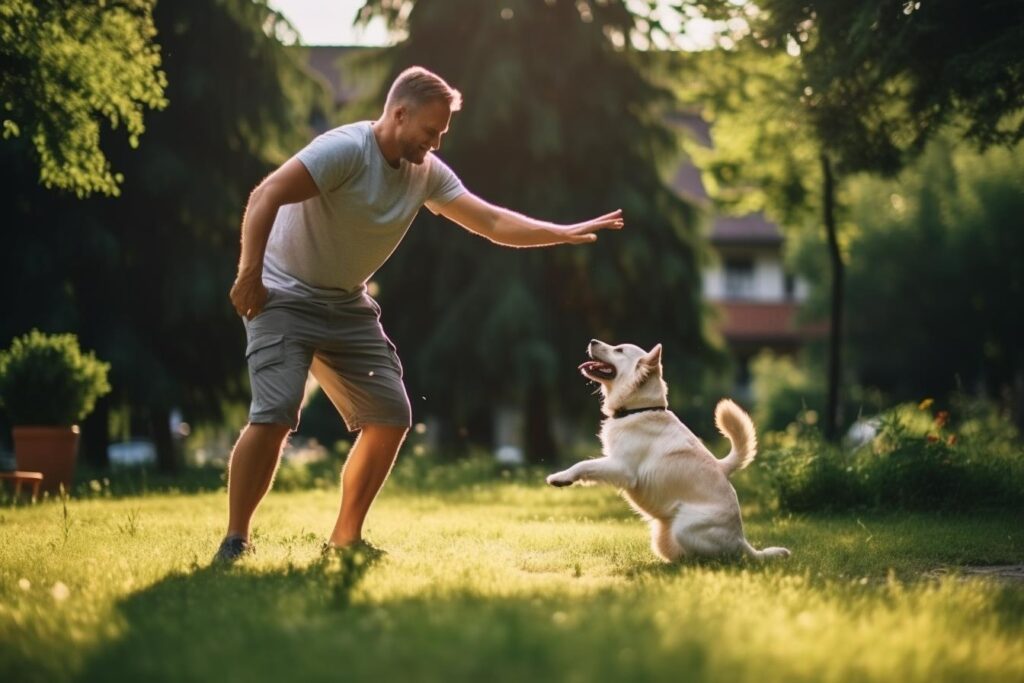
So, make sure to incorporate obedience training into daily activities to help foster a respectful relationship, where the dog understands and respects the owner’s authority, contributing to a more stable and balanced temperament all while making sure you, as the owner also understands their limits and respecting that boundary. Ensure that obedience training your dog gets is in place to facilitate teaching through skills focused on distraction and impulse control, promoting appropriate behavior around both dogs and people. Moreover, advanced obedience training, such as off-leash commands and advanced tricks, can further challenge the dog mentally and provide additional avenues for positive reinforcement.
5. Behavior Modification Strategies
Addressing specific aggressive behaviors requires targeted behavior modification strategies. Identifying triggers and implementing controlled exposure in a safe environment is key. This method helps the dog learn alternative, non-aggressive responses to stimuli, fostering a more positive and adaptive mindset.
While we don’t want to or can change you’re dog’s personality, behavior modification involves creating a personalized plan tailored to the individual dog. Analyzing the context, frequency, and intensity of aggressive behaviors guides the development of effective strategies for long-term success. Regular reassessment of the behavior modification plan is essential. As the dog progresses, adjustments may be needed to address new challenges or fine-tune the approach for optimal results and knowing when their limits are being met and adapting from that.
In addition to addressing aggression, behavior modification can encompass teaching alternative behaviors that serve as outlets for the dog’s energy. Redirecting the focus from aggression to more constructive actions contributes to a well-rounded and balanced canine companion.
6. Avoiding Punishment: A Counterintuitive Approach for Dog Aggression
Contrary to common belief, punishing an aggressive dog can exacerbate the problem. It may heighten fear or anxiety, leading to more aggressive behavior. Training programs should focus on positive reinforcement, creating a supportive environment for the dog to learn and grow.
Avoiding punishment doesn’t mean ignoring undesirable behavior. Instead, it involves redirecting the dog’s focus to positive actions and rewarding those, encouraging a shift towards more desirable behavior over time. Positive reinforcement should be the primary focus, but understanding how to redirect and manage undesirable behavior without resorting to punishment is crucial. This ensures a balanced and effective training approach. Incorporating positive punishment alternatives, such as time-outs or redirection, can be effective in addressing undesirable behaviors without causing undue stress or fear.
Training involves positive reinforcement, yet a dog comprehends the command “no” when exhibiting undesirable behavior. Similar to humans, we cannot alter a dog’s personality, but we can educate them using obedience skills, emphasizing distraction and impulse control for appropriate conduct around dogs and people. And with PK9 Training we make sure your dog gets the right type of training that is balanced for both you and your dog.
7. Consistency in Training
Consistency is the core of successful dog training. Every member of the household should follow the same rules and commands to avoid confusion. This ensures that the dog receives clear and consistent signals, promoting a more stable and secure training environment. Consistency extends beyond commands to routines and expectations. Dogs thrive on predictability, and a consistent environment helps them feel secure and better understand what is expected of them.
Additionally, scheduling regular training sessions and incorporating training into daily activities fosters ongoing learning and reinforces the established behaviors. Consistency also involves aligning training techniques with the dog’s individual learning style. Some dogs may respond better to visual cues, while others may excel with verbal commands. Adapting the training approach enhances effectiveness.
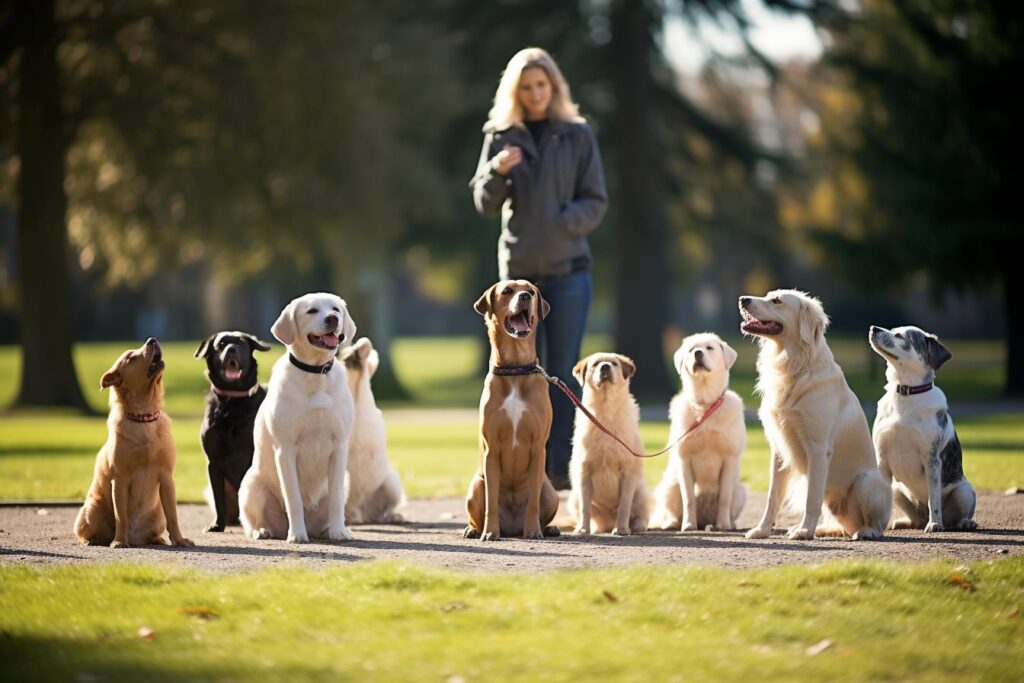
8. Creating a Safe Environment
Safety is paramount when dealing with aggressive dogs. Utilize tools such as leashes, muzzles, or barriers as needed, especially during the initial stages of training. Creating a secure space allows for effective training without compromising the well-being of the dog or those around it.
A safe environment also involves managing the dog’s surroundings to minimize potential triggers because just like us everyone has their limits. This proactive approach helps set the dog up for success in learning new, positive behaviors. Safety measures should be adapted as the dog progresses in training. Gradual reduction of reliance on tools like muzzles signifies increased trust and improved behavior. Implementing safety measures in everyday scenarios, such as introducing a visual cue before approaching unfamiliar dogs, creates a proactive and controlled environment for the dog.
9. Regular Exercise for Behavioral Wellness
Adequate physical and mental exercise is a crucial component of any training program for aggressive dogs. Regular walks, playtime, and mental stimulation activities help reduce stress and anxiety, contributing to improved overall behavior. Exercise isn’t just about physical exertion; mental stimulation is equally important. Puzzle toys, training games, and interactive activities engage the dog’s mind, promoting a healthier mental state.
Tailoring exercise routines to the dog’s energy level and preferences ensures that the activities are enjoyable, making them more effective in managing aggression. Exploring various forms of exercise, such as agility training or scent games, can provide mental challenges that complement physical exertion, contributing to a more balanced and fulfilled canine companion.
10. Seeking Professional Help for Your Dog’s Behavior
When faced with severe aggression or uncertainty about handling the situation, seeking professional assistance is highly recommended. Certified professional dog trainers or behaviorists bring expertise and tailored solutions to address specific issues, ensuring a more effective and personalized approach to rehabilitation.
Professional help involves collaborative efforts, with trainers working closely with pet owners to understand the dog’s history, behavior patterns, and individual needs. A customized plan is then developed to address the root causes of aggression and implement effective strategies for behavioral change. Regular communication with the professional trainer is crucial for ongoing support. Progress updates, adjustments to the training plan, and addressing any new challenges ensure a comprehensive and successful rehabilitation process.
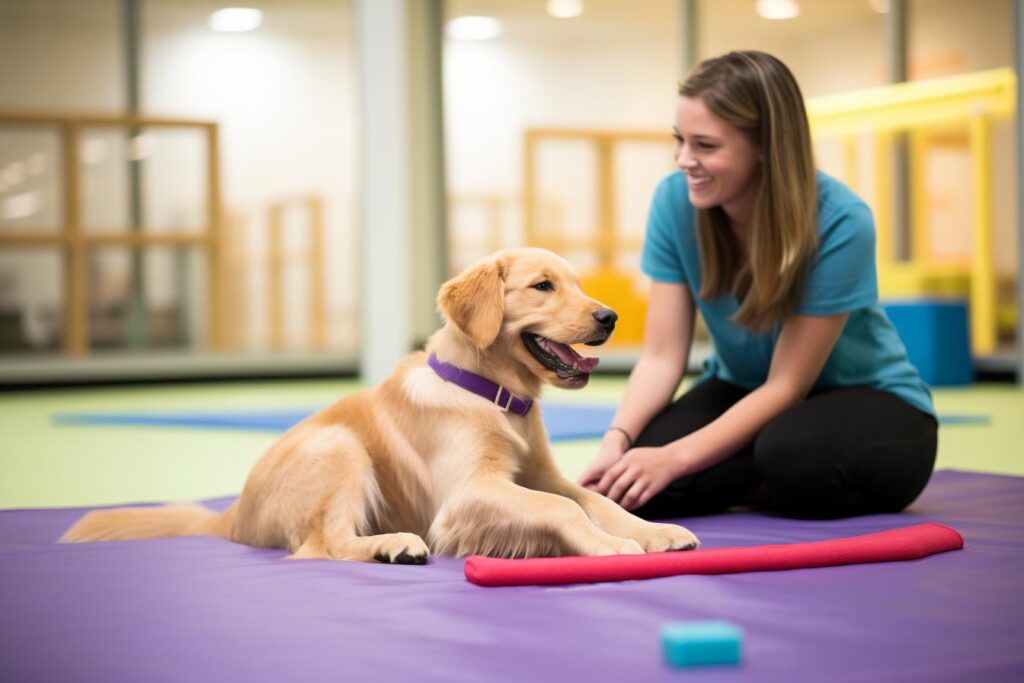
In addition to professional trainers, involving veterinarians in the training process can provide valuable insights into potential medical factors contributing to aggression. A holistic approach that considers both behavioral and medical aspects ensures a thorough and effective treatment plan.
Building Balanced Harmony Through Training
Training for aggressive dogs requires dedication, patience, and a deep understanding of canine behavior. By incorporating positive reinforcement, desensitization, obedience training, and professional intervention, pet owners can embark on a transformative journey toward a more harmonious relationship with their beloved companions. Remember, each dog is unique, and a tailored approach is essential for success in aggression rehabilitation.
With consistent effort, understanding of their basic needs and limits, and the right strategies, you can unlock the transformational potential in your aggressive dog, creating a lasting bond built on trust, respect, and positive behavior all while learning about your pup’s personality traits. The journey may be challenging, but the rewards of a well-behaved and happy canine companion are immeasurable.
In your quest to find a dog trainer for aggressive dogs, prioritizing expertise and a personalized approach are paramount. At Performance K9 Training, we specialize in addressing dog aggression with our Aggression Rehabilitation Program, proudly standing as experts dedicated to guiding dogs away from aggressive tendencies through our balanced methodology of positive reinforcement, but making sure your dog understands the unwanted behavior. Our trainers ensure a commitment to effective, compassionate, and tailored training held to the highest standards. Entrust us to be your partner in transforming your aggressive dog into a well-balanced and harmonious companion. Feel free to reach out today to provide your dog with the assistance they need to overcome aggression. We are devoted to supporting you and your furry companions, ensuring a more harmonious life together.



